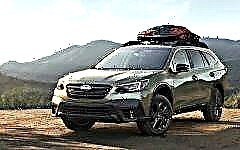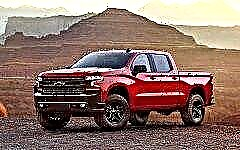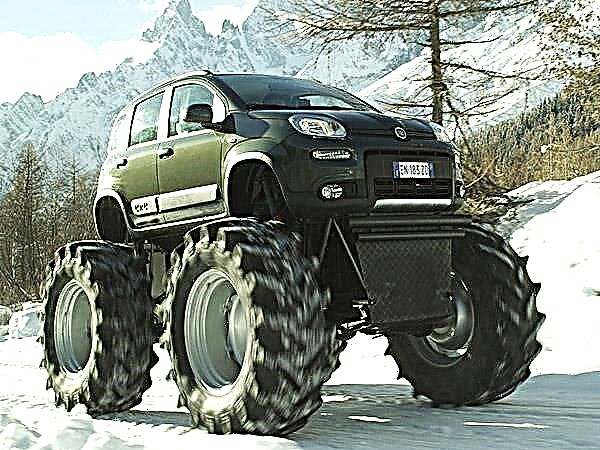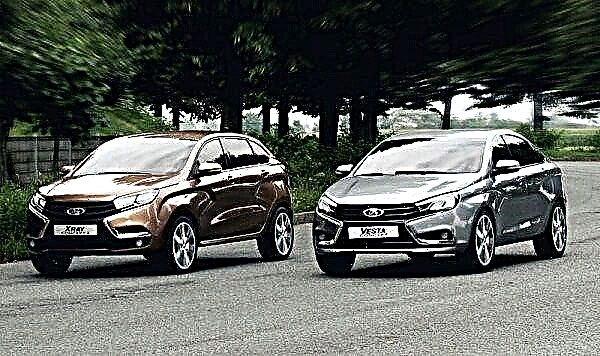
The content of the article:
- Impact of winter weather on the car
- We buy winter tires
- Winter driving tips
All car owners associate the end of October and the beginning of November with the period when they need to start preparing the car for winter. Difficulties with freezing of parts and liquids, unstable winter driving in icy conditions and large high snowdrifts, and much more are expected.
Before the onset of cold weather, it is advisable to check your car at a service station and contact qualified experienced auto mechanics. If necessary, consult the selection of the appropriate low temperature care products for your car model.
How winter affects the car

What awaits the "iron horse" during the period of low temperatures, periodic melting of snow and the ingress of dirt? The car consists of many parts made of different materials, and not all of them are adapted to the conditions of the freezing snowy winter. For car owners, this is a whole disaster, but if you are prepared in advance for all the difficulties, it is quite easy to avoid problems with the car. What to pay special attention to in winter:
- Of course, a rechargeable battery, which in winter is in especially conditions of intensive work.
ADVICE: Charge the battery or take care of the presence of wires for the cigarette lighter, which also will not be superfluous. - Wipers and windshield. It's time to buy anti-freeze or specially created for this fluids marked "anti-ice", which will keep the wiper motor. Before cleaning the snow from the windshield, brush it gently with a brush, and then turn on the wipers. A frozen windshield can be warmed up - start the car and direct a stream of hot air towards the glass.
ADVICE: Buy winter wipers that are fitted with rubber inserts. Do not lean them against the glass at night, as they may simply freeze. - The machine does not open - the lock is frozen. Almost every car owner faces this problem. What to do in such situations? Buy special liquids marked WD-40, which are capable of defrosting not only the lock, but also the rubber seal. Combine them with lithium grease. Do not forget about the gas tank in this regard.
ADVICE: Winter driving wears out the car very much. After the trip, be sure to open all the doors so that the hot air comes out of the passenger compartment, and the outside and inside temperatures become equal. Lubricate door seals, special rubber parts with silicone products. This will help avoid further cracking. - What is safer at low temperatures - diesel or gasoline? Condensation can build up in the gas tank of a car using gasoline. Therefore, it is worth solving this problem by adding moisture removal products to it. Diesel will require the addition of antigel. As you can see, both diesel and gasoline have troubles in winter.
- Brake pads also suffer from the frosty freshness of winter. If the car has disc brakes, it is necessary to douse them with liquids containing alcohol. In the case of a drum kit, it is better to consult a specialist.
ADVICE: Do not use the handbrake for a long time. Towing in such cases will not help. - Reagents. Special chemical solutions that cover the roads help the car not to get stuck in snowdrifts and drive without sliding on the highway, but they lead to the appearance of rust not only on the surface, but also on the car parts. Keep an eye on this and coat the machine with anti-corrosion agents before winter sets in.
- How will snow chains help? Long journeys on the highway make you think about possible drifts on a slippery road. This is where rubber and metal "helpers" come in handy. The difference is that rubber is lighter, helps to reach a speed of 80 km / h, keep tires, and metal are used in more difficult conditions, so they are more rigid. The speed when using them is low - up to 40 km / h.
- Is it necessary to wash the car in winter? Of course. Wash off dirt, chemicals and particles of other elements that fall on the surface of the car.
ADVICE: Do not try to wash the car yourself in the cold period, entrust it to the workshop workers. The main thing is not to clean, but to dry the car well.
And most importantly, if you are a newbie to driving, it is better to turn to the professionals or ask the advice of experienced drivers.
Buying winter tires

How important is winter tires? How to choose and buy reliable winter tires? Let's consider separately, since all car owners face this problem.
Winter tires, unlike summer ones, are more elastic and softer. This feature allows her not to harden in frost.
It is usually produced from rubber with the addition of silicon additives. It has a more bulky profile and a smaller width. Use winter tires at a temperature of -5 degrees.
There are climatic characteristics of tires:
- Scandinavian. They are used in areas with icy roads, snow crust. They have a diamond-shaped pattern structure;
- European. Contains special water-repellent elements. Designed for winter driving on a small amount of melted snow and on wet roads with a little ice. They contain a large number of slots and have good grip.
The drawing also has its own characteristics:
- Symmetric. A cheaper type of rubber. Creates inconvenience to car owners due to a slight hum in the cabin. Tires adapted for city driving;
- Asymmetric. Provides for driving a car around the city, highways. Does not create additional noise.
Separately, each category is divided according to its characteristic features:
- directional drawings - do an excellent job with drifts and snow crust;
- omnidirectional images will help against exposure to snow and water.
An important indicator of winter tires is the maximum speed that can be developed by wheels "shod" with winter tires. Here you need to know the letters and their numerical meaning:
- F - 80 km / h;
- G - 90 km / h;
- J - 100 km / h;
- K - 110 km / h;
- L - 120 km / h;
- M - 130 km / h;
- N - 140 km / h;
- P - 150 km / h;
- Q - 160 km / h;
- R - 170 km / h;
- S - 180 km / h;
- T - 190 km / h;
- H - 210 km / h;
- V - 240 km / h;
- W - 270 km / h;
- Y - 300 km / h.
Spiked rubber has its own characteristics. For the first kilometer of driving on such rubber, keep the maximum speed of 80 km / h, which will allow you to break in the "shoes" of the car. This kit copes well with ice, snowy road surfaces. Small braking distances in icy areas. But wet and dry asphalt will significantly reduce the stability of the machine. Noise is inconvenient.
Winter tires without studs go through dry and wet asphalt, do not react to high temperatures, and practically do not make noise. But in slippery conditions, such rubber is useless.
Winter driving tips

So that winter does not cause an increased level of accidents on the roads and possible injuries with this, you should also adhere to some simple driving rules:
- Winter driving involves a particularly dangerous form of movement. Forget about summer trips, now you need attentiveness, concentration and the most responsible driving. Try to install the driver's seat and head restraints so that in unforeseen cases or possible accidents, you would be firmly pressed against the seat without harm to your health.
- Seat belts. Their use is especially important in winter.Do not be lazy to fasten them - unexpected situations when driving on ice can await everyone.
- The dipped beam must always be on. This will improve the visibility of the car for other road users and pedestrians in heavy snow and fog. In the event of a breakdown or failure of car parts, do not forget to hug the roadside and turn on the appropriate emergency signals. Use special reflective signs, especially in the evening and at night when visibility is limited.
- Mirrors. Do not forget to wipe them regularly so that the field of view is always clearly visible - this is very important. Adjust the position of the mirrors in advance.
- At the beginning of the journey, you need to start the car correctly and drive off. Don't try to play stuntman and avoid slipping. Drive as smoothly as possible, rock the car a little back and forth. Try to get out in second gear.
- You should also brake very carefully. If the car is equipped with anti-lock braking system ABS, it is best to gently press the pedal. Otherwise, wheel locking is guaranteed. If not, intermittent braking will help in icy conditions. The transmission should not be turned off.
- Drifts. Insidious and cunning, they lie in wait everywhere. Avoid high-speed driving, don't be heroic. It is better to limit the speed when driving to 30 km / h. A front-wheel drive vehicle can pull out of a clever, unplanned skid as speed increases. Rear-wheel drive, on the other hand, must release the gas. The driver will have to turn the steering wheel in the direction of the skid. Thanks to centrifugal force and inertia, the vehicle will return to its original position. After exiting a skid, observe the movement and behavior of the machine. Turn the steering wheel gradually in the opposite direction to the skid.
- Observe the maximum distance on the road. If in summer it was possible to snuggle tightly to a nearby car, then in winter it is better not to do this. Any, even a small area with ice will provoke slipping and, as a result, an accident or a small road accident.
- Watch out for road signs, as the markings are not visible in winter. Cross road and tram tracks with caution. Avoid skidding the machine in such areas.
- When driving uphill, remember to increase your speed, and when descending, do not rely on neutral position. Engage a low gear and carefully pull down, carefully watch the behavior of the machine.
- Move carefully from row to row. It may not be possible to slip into an empty seat in the next row, as in summer. If necessary, do it slowly, smoothly, and in advance.
- Do not enter a turn at high speed. Skidding is guaranteed.
- When driving through snowdrifts and deep snow, do not pick up speed, drive slowly, in a low gear. To drive through a snowdrift, pick up speed. Better to go around it. If this cannot be done, it is better to clear the snowdrift or ask someone to help in order to avoid slipping. Be careful, as under the snowdrifts you can expect surprises in the form of hemp, open sewer manholes or holes, pieces of reinforcement.
These are the basic winter driving tips. Beginners would like to wish to avoid accidents and, if necessary, it is better to play it safe: slow down, let another car go forward, do not drive on ice and snowdrifts. Always carry with you in cold and cold weather:
- entrenching tool (shovel, crowbar, etc.);
- towing rope;
- wires for "lighting";
- car charger;
- windshield brush;
- Lantern.
Beginners are advised not only in winter, but also in summer to use appropriate glass stickers with an exclamation mark. They help experienced drivers bypass such cars or let them pass, knowing that a novice car enthusiast is driving. Autolady use shoe designs.











